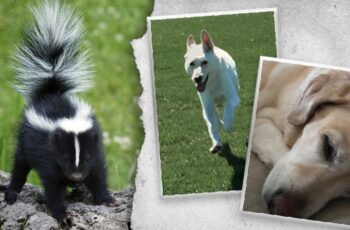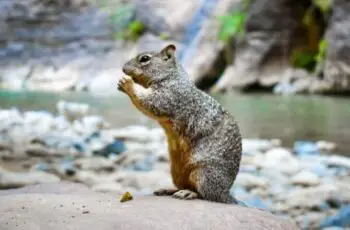When we talk about squirrels, people imagine adorable furry rodents that hop from tree to tree, running and searching for nuts and seeds to eat.
However, tree squirrels are not the only species of these adaptable rodents. Some squirrels do not live in trees at all. Instead, they occupy burrows and live underground, making frequent trips to vegetable gardens searching for food and shelter. These long-bodied terrestrial mammals are known as ground squirrels, and they have 62 species.
This article details the dietary habits of these diurnal rodents and what to feed some of their most famous ground squirrel species.
The Short Answer…
Similar to grey squirrels, ground squirrels eat fruits and vegetables, seeds and nuts, plants parts, wwigs, and fungi, bird Eggs and carrion, insects and small vertebrates. California ground squirrels seem to love to eat small animals and insects while also snacking on plants and veggies. From newborn to 8 weeks, baby california ground squirrels drink milk. After which, they can eat what their parents do. More importantly, ground hogs eat berries, respberries, wild lettuce, buckwheat buttercup.
What Do Ground Squirrels Like To Eat?
With their habitat so different from tree squirrels, the question remains: what do ground squirrels eat?
Ground squirrels are omnivores inclined for herbivorous food like green plant parts, fruits like orange, seeds, nuts, and fungi. However, if needed, they also eat bird eggs, insects, carrion, and small animals like caterpillars. These opportunistic omnivores usually wreak havoc in home gardens searching for food, doing considerable damage to plants and vegetation. Ground squirrels burrow for shelter and food, damaging property in doing so. The damage ground squirrels cause has earned them the notorious title of pests.
While they vary greatly in size by species, ground squirrels can eat mice and rats, including other vertebrates, much larger in comparison.
-
Fruits and Vegetables
Ground squirrels live in burrows and are often foraging for food in fruit like strawberries and vegetable gardens, even in parks. They like a variety of fruits, including apples and apricots. They also enjoy a fair share of seedlings, often destroying fruit trees in backyards. Even though they live in burrows, ground squirrels can climb trees and feast on available fruits, often not waiting for them to ripen.
Similarly, grounds squirrels love vegetables like mushrooms and seedlings. They are frequent vegetable garden visitors, often posing problems for home gardeners. Many vegetables are often food for the ground squirrel as they munch on their roots during the seedling stage. However, it would be best to be wary of these pesky rodents, as they also eat small plants. Corns and tomatoes are some of their favourite foods to consume. Nonetheless, squirrels travel far for food, but how far? Here’s how far.
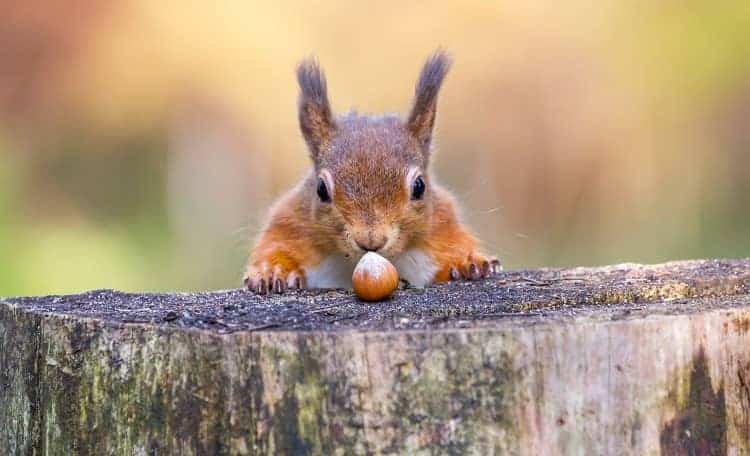
-
Seeds and Nuts
Ground squirrels have a versatile diet and feed on what is available in abundance. Therefore, during fall, they make seeds a considerable part of their diet since they are readily available in the wild and suburban areas like yards and parks.
Like other squirrel species, ground squirrels also have a fondness for nuts. Almonds, walnuts, and pistachios are among the favourites for these diggers. If you have nut trees in your yard, then rest assured, you will be regularly seeing ground squirrels looking to feed themselves.
Since seeds are an essential food source for squirrels, especially in the winter months, you will often find them rummaging through bird feeders.
-
Plants Parts, Twigs, and Fungi
Plants parts, twigs, and tree barks are popular food sources for ground squirrels. They gnaw on tree barks and girdle trunks. They also enjoy eating leaves and twigs. However, these are not a primary food source for them.
Habitat also impacts ground squirrel activity when it comes to food. Ground squirrels naturally occupy pastures, fields, and other grassy areas. Therefore, herbaceous plants, green plant parts, and green grasses form a significant portion of their diverse diet. Ground squirrels also eat fungi, much like flying squirrels.
-
Bird Eggs and Carrion
Even though mainly herbivores, ground squirrels supplement their diets with bird eggs and carrion when the opportunity arises. These rodents often threaten ground-nesting birds as they eat their eggs and nestlings.
Since they are not picky eaters, ground squirrels also feed on the rotting flesh of dead animals, known as carrion. Sometimes squirrels also invite its loved ones for food if its near. They make a particular sound that indicates inviting others.
-
Insects
Most ground squirrels supplement their diet with insects such as crickets and caterpillars. When seeds, nuts, and fruits like pine cones are not available, this resourceful rodent will make a meal out of any small insects it can find like mealworms.
-
Small Vertebrates
Ground squirrel diet also consists of small vertebrates, including mice and rats that are pretty large in comparison. Ducklings, small rabbits, toads, and frogs are also food sources.
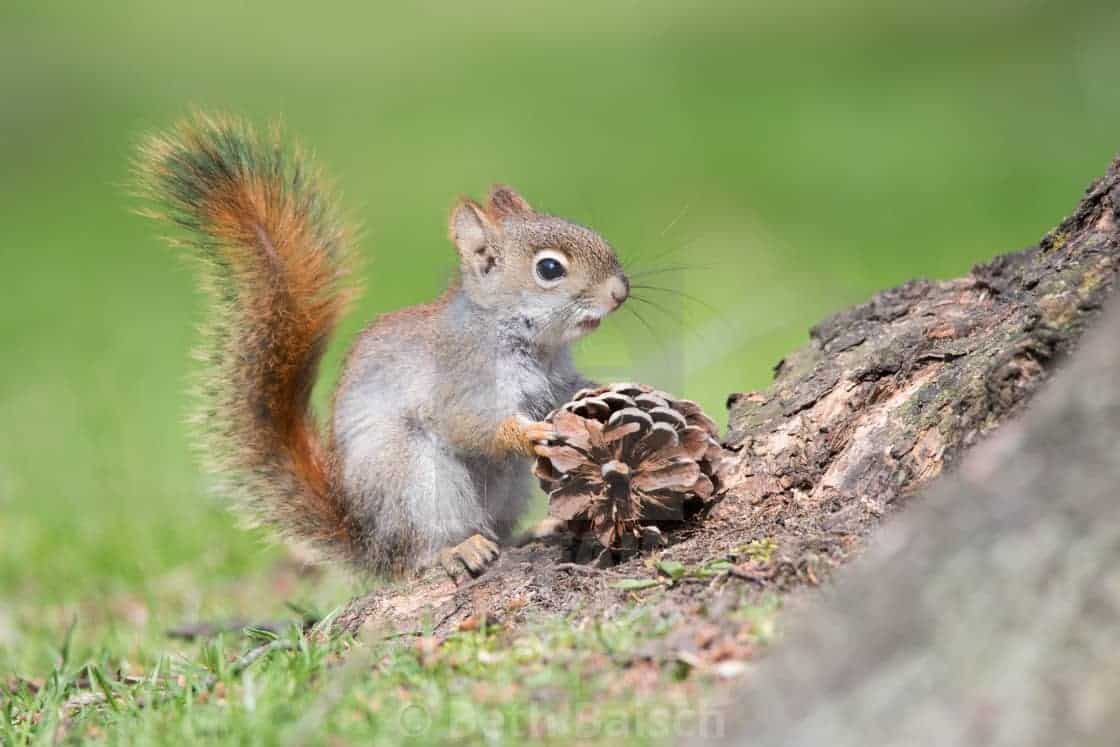
What Do Baby Ground Squirrels Eat?
We know that ground squirrels live in a burrow system. They often retreat to these underground tunnels when under threat from predators or when they need to rest. Moreover, ground squirrel babies also stay safely tucked away underground with their mother, who feeds them until they are 6 to 8 weeks old. After they are fully weaned, the baby squirrels often begin their solid food diet with small plants, moving on to nuts and fruits as they grow older to roam above the burrows on their own.
Essentially, the first few weeks of their lives, ground squirrels are dependent on maternal care, where they nurse until they can survive on solid foods.
If you have found an abandoned baby squirrel, remember you cannot feed it solid foods until they are fully weaned. In the first six to eight weeks of their lives, baby squirrels in captivity need to be fed goat’s milk replace to or puppy’s milk replacement formula. Do not feed them cow’s milk or baby formula as it does not contain the proper nutrients and may contain dangerous lactose amounts for the infant squirrel.
Remember that infant ground squirrels also need help eliminating waste from their bodies, so in captivity, you need to replicate the process with the help of a soaked cloth or tissue. Use the damp cloth or tissue to gently rub the infant squirrel’s genitals until they urinate or produce solid waste. This process needs to be repeated after every feeding and then slowly lessened in frequency as the squirrel grows older.
What Do California Ground Squirrels Eat?
The California ground squirrel is a ground squirrel species found in hillsides with trees, plains, pastures, and fields in western Oregon, central Washington, and most parts of California and northern Baja California. The squirrel species have also extended their north range to south-central Washington by crossing the Columbia River.
While the California ground squirrel does not restrict itself from eating small animals and insects when needed, they are primary herbivores. Their most significant food sources include seeds, nuts, fruits, berries, grains, flowers, stems, roots, and leaves.
They will, however, also eat caterpillars, crickets, grasshoppers, and beetles.
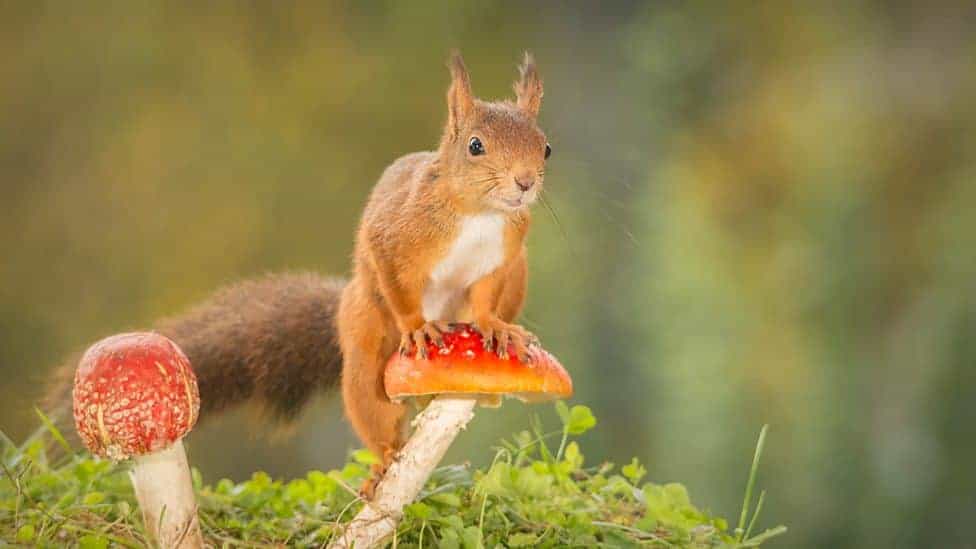
What Does A Baby California Ground Squirrel Eat?
Like most ground squirrels, the California ground squirrel lives in burrow systems that they dig themselves. These extensive tunnel systems help them store food which they bring back in their cheek pouches and shelter their babies till they are old enough to forage for food on their own.
The young California ground squirrels open their eyes after they are five weeks old; till then, they rely entirely on their mother to nurse and take care of them. The pups or kits are weaned around 6 to 8 weeks, after which they move out from their underground tunnel to forge for small plants and other solid foods.
In captivity, the baby California ground squirrels rely on the nutrients from puppy or goat’s milk replacement, closely mimicking their mother’s feed. It would be best not to feed the kits apart from the recommended replacement formulas. Baby milk formulas or cow’s milk have too much lactose for the pups, whose digestive systems s still adapting. Feeding natural milk with lactose or protein content could lead to severe digestive issues.
When feeding a baby squirrel, ensure that the milk mixture is made fresh; otherwise, acidic milk residue could result in fatal diarrhea.
What Do Groundhogs Eat?
Belonging to the heaviest members of the squirrel family, marmots, the groundhog is a giant ground squirrel that is essentially a herbivore. Like other ground squirrels, groundhogs also live in complex burrows, where they disappear throughout winter when they hibernate.
Their primarily herbivorous diet includes vegetation and wild grasses from their preferred habitat of plains and woodlands. Although, they are also found in suburban areas, where they can be a nuisance for home gardeners as they weaken foundations through burrowing activity and feed on most commonly grown vegetables.
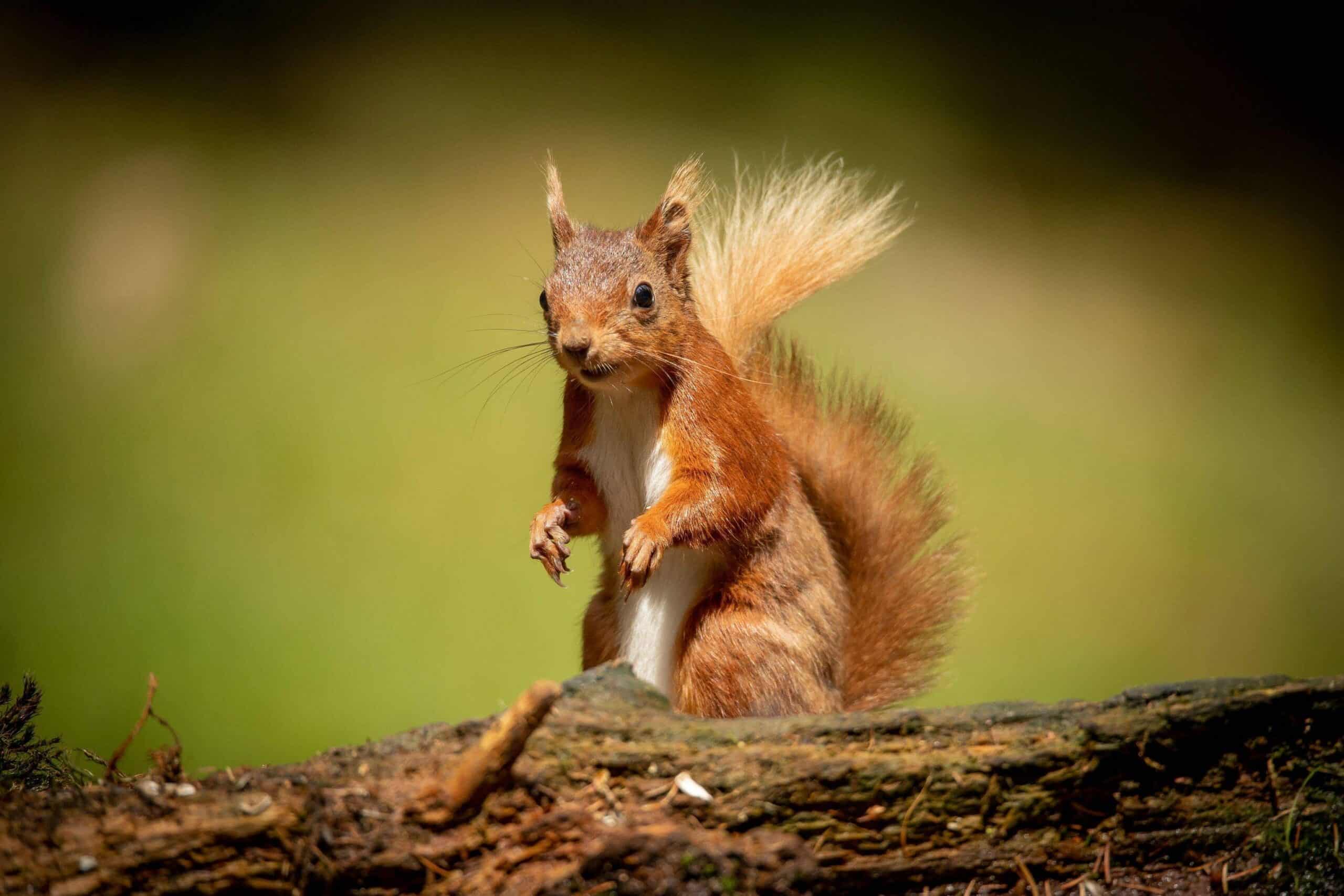
They also like to eat mulberries, berries, raspberries, wild lettuce, buckwheat, clover, buttercup, sheep sorrel, and alfalfa. Coltsfoot and dandelion are essential foods for the groundhog in early Spring. They also consume timothy grass, plantain, tearthumb, and agrimony. However, even with their vegetarian preferences, they do not deviate from the ground squirrel’s opportunistic omnivorous dietary habits. You will find groundhogs occasionally devour snails, grubs, grasshoppers, and maybe even baby birds should the opportunity arise.
During the summer months, the groundhog, also known as a woodchuck, will see a decrease in its feed and metabolic rate. Despite the decline, they double their weight in summer. The fat deposits help them survive winters without eating anything from September till February, when they reemerge from their burrows, announcing the arrival of Spring.
What Do Prairie Dogs Eat?
Despite their name, prairie gods are not canines but a type of ground squirrel. Mainly herbivores, prairie dogs consume tiny seeds and grasses. When fall comes, they feed on broadleaf forbs. They also like to eat fruits, buds, and roots. Snow becomes a water replacement in winter for pregnant and lactating female prairie dogs. They sometimes eat insects but gravitate towards filling their bellies with vegetation as much as possible.
Several species of prairie dogs, including black-tailed prairie dogs, feed on tumble grass, western bluegrass, buffalo grass, six weeks fescue, and blue grama. Gunnison’s prairie dogs also feed on blue grama and buffalo grass, with the addition of cacti, saltbush, rabbitbrush, and dandelions.
White-tailed prairie dogs are known to kill medium-sized Wyoming ground squirrels. However, this vicious behaviour us to wipe out food competitors. Killing competition is more of a predatory activity attributed to animals involved in hunting for their food. However, primarily herbivore species killing their grass-eating competition isn’t as common.
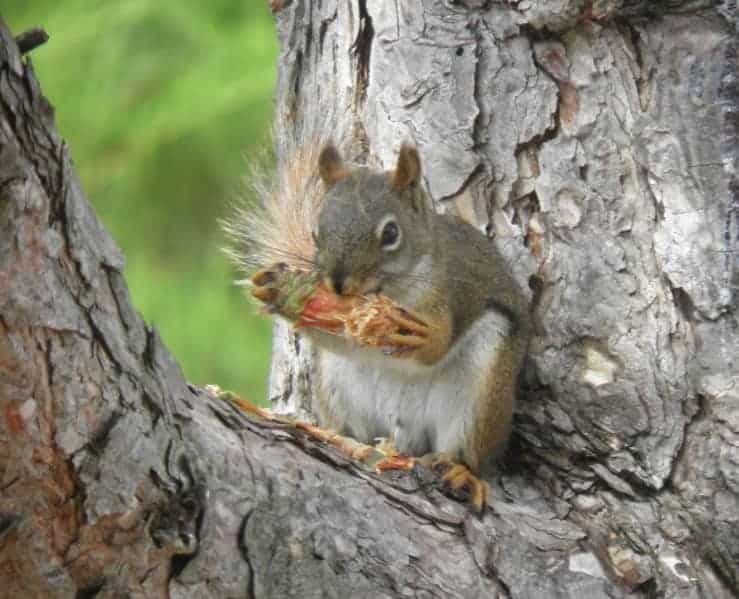
Despite killing smaller ground squirrels, white-tailed prairie dogs still feed on vegetation, sometimes taking a nibble or two from the dead squirrels but returning to their usual diet. The most common attackers are lactating prairie dogs trying to secure enough feed for their young ones, especially in early Spring when there is less grass and more competition. The carcass is usually left behind after the kill, as prairie dogs do not actively feed omnivorously unless necessary, that too only insects.
However, prairie dogs are not the only animal which chase and kills squirrels. In fact, raccoons, cats, dogs and even crows also happen to kill squirrels.
What Do Rock Squirrels Eat?
The largest of ground squirrels, the rock squirrel, can grow up to 21 inches. As the name suggests, rock squirrels live in burrows with entrances under big rocks, with probable lookout areas. This ground squirrel avoids scorching weather in fear of estivation. Therefore, it forages for food early in the morning or late afternoon.
Rock squirrels also consume a predominantly herbivorous diet as usual for a ground squirrel. However, small vertebrates and invertebrates are also liable food sources for them. They enjoy seeds, nuts, fruit from fruit trees native to their habitat, various grass types, agave, juniper berries, cacti, and mesquite. This ground squirrel may also devour its own kind’s dead bodies and other animals that are dead. These squirrel species prefer earthworms, beetles, grasshoppers, and fowl for their other carnivorous consumption, including juvenile wild turkeys.
The rock squirrel is a good climber, especially for a ground squirrel. In fact, they spend a lot of time up fruit trees, looking for fruit, or keeping an eye on potential predators. Moreover, this large ground squirrel has huge cheek pouches, which it uses to store food to be eaten later. It fills its cheek pouches with food that it hides outside its burrows in various holes.
In their northern range, these ground squirrel species hibernate during winter; however, their southern range counterparts do not.
Ground Squirrels: Hibernation and Food
Do Ground Squirrels Hibernate?
There are 62 species of ground squirrels, and, yes, many of them hibernate during winter. Ground squirrels can hide for up to 5 to 8 months, depending on the species. Ground squirrels are the only squirrel species that hibernate. In contrast, the others go into winter rest mode, where they preserve energy by lowering activity by resorting to only necessary outings for food.
The range map also plays a vital role in whether a ground squirrel species hibernate or not. For many ground squirrel types, let’s take the rock squirrel as an example; the northern range squirrels hibernate, whereas the southern range stays active through the year.
Some ground squirrel species, like the groundhogs, go into proper hibernation, where they do not eat at all post-September and sleep in their burrows from halfway through October to early Spring when their appearance signals the end of winter. They survive the harsh weather without eating, thanks to the layer of fat that keeps them warm and allows them to remain dormant.
Therefore, this particular large ground squirrel kind gains almost 100% of its body weight in fat in summer for dormancy in the coming months. This brown fat accumulation phenomenon occurs with other non-hibernating squirrels, although they do not gain as much as the groundhog.
While squirrels that do not hibernate store caches of food scattered in different places and use their memories to access them for later use. This scatter-hoarding technique ensures that if one store of their winter food gets stolen, they will still have several other hoardings to feed from.
On the other hand, the hibernating ground squirrels feed on the last grass before winter hits, storing as much fat and energy as required to pass the winter months in a deep sleep. Tropical ground squirrels, however, do not face food deficiency based on the weather conditions and thus, do not resort to food hoarding, staying active throughout the twelve months.
Conclusion
The ground squirrel species can be identified when seen sticking up on their strong hind legs as they look for predators. However, while most infamous, this behaviour is not the only differentiating factor of this burrowing squirrel.
While the term ground squirrel is commonly attributed to mid-sized ground squirrels, these squirrel species can vary in size. Even though they can climb, albeit not as skillfully as a tree squirrel, they often feed on grasses and other vegetation. While many ground squirrel species are mainly herbivores, their opportunistic feeding nature meant that bird eggs, nesting, small vertebrates, insects, and carrion were all food sources readily accepted by them.
Ground squirrels would happily munch on various grasses, fruits, nuts, seeds, multiple kinds of berries, cacti, and other green plants native to their habitat. These rodents enjoy green forage in Spring but often shift to seeds and nuts in the fall because of easy availability. Including that, squirrels may also eat humans food and leftover, and even chocolate and popcorn.
Many home gardeners face a ground squirrel problem as these burrowing mammals wreak havoc in vegetable gardens, munch on greens, and destroy garden bedding with deep tunnelling.
Baby ground squirrels wean in about 6 to 8 weeks, before which they are wholly reliant on their mothers’ feed, who take care of them in the underground burrows. Due to their non-picky nature, ground squirrels feed on a versatile diet that allows them to thrive in various landscapes.

